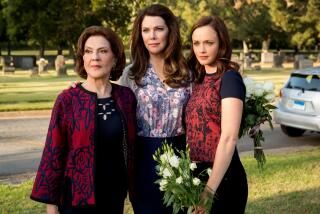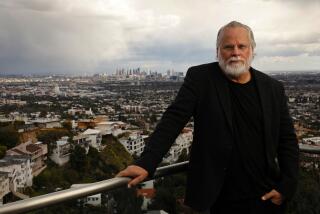Elizabeth Hand’s mystery series takes on art and death on the way to whodunit in ‘Hard Light’
Popular culture has been teeming with antiheroes of late, but Elizabeth Hand’s Cass Neary stands out from the crowd. For one thing, she’s a woman, not a man with a hit list and a moral code or a power complex and a nagging wife. She doesn’t really fit any archetype; she crackles with individuality.
Cass is a photographer who made a name for herself in the 1970s New York punk scene, 30 years before her first appearance in 2007’s “Generation Loss.” Now in her late 40s, she’s “the ghost of punk, haunting the twenty-first century in disintegrating black-and-white; one of those living fossils you read about who usually show up, dead, in a place you’ve never heard of.” In her battered leather jacket and Tony Lama boots, she binge drinks and raids medicine cabinets and does her absolute best to court death and destruction.
“Hard Light,” Hand’s third Cass Neary novel, picks up where “Available Dark” left off, with Cass fleeing Reykjavik for London on a stolen passport to meet her sometime lover Quinn O’Boyle. Both Cass and Quinn are wanted by various entities for their involvement in various murders — Cass is essentially in exile from the U.S., where she’s lived in the same Lower East Side apartment for decades, because of all the bodies that seem to pile up wherever she goes.
Yes, she’s a murder magnet as suspiciously powerful as Jessica Fletcher in “Murder, She Wrote,” but her outsized misadventures make perfect sense in her death-marked world. Ever since she was raped at knifepoint in her 20s (the scars incorporated into a tattoo that reads “Too tough to die”), she’s had a mysterious ability to “sense damage, smell it like an acrid pheromone seeping from the pores of people around me.” This ties into her talent and intuition for photography, “[b]ecause that’s what photography is — or was, before the advent of digital — damage, the corrosive effect that sunlight has on chemicals and a prepared surface.”
If the Cass Neary novels are about any one thing, they’re about the eerie, uncomfortable intersections of art and death. In every book, Cass — who has photographed plenty of corpses in her day, most of them quite fresh — manages to find and be found by other artists obsessed with documenting death, whose work she meets with a mix of fascination and disgust. She’s drawn to the extreme and the transgressive, and her own moral boundaries are not at all clear, especially when art is at stake.
“Hard Light” centers on moving pictures — a fictional hallucinogenic experimental film, “Thanatrope,” about the experience of death; and thaumatropes, ancient artifacts that create the illusion of motion with two images that blur together when spun. Cass encounters both “Thanatrope” and thaumatropes when Quinn fails to show up in London, and she immediately gets mixed up with a messy, intriguing circle of people — antique dealers, club singers, aging ex-groupies, murderers. “Being in London,” she narrates, “was like falling into some vast interactive computer game where I didn’t know the rules, didn’t know the landscape, didn’t know which characters could kill me.” Her new acquaintances all have ties to a place called Kethwelwite Manor, “the castle in an acid-fueled waking dream,” a foreboding, isolated site in Cornwall crawling with archaeological riches as well as secrets and scandal and tragedy.
Hand is an extraordinary writer with a strong voice and a seemingly infinite supply of well-observed, macabre details. While Cass captures images with her 13-millimeter Konica, Hand shows us a man with “eyes so bloodshot they looked as though they’d been scooped from his skull,” a woman whose “breath reeked of carious teeth and gin.”
Like “Thanatrope,” “Hard Light” threads together a lot of images and ideas to create a memorable experience. The plot is unruly and sometimes hard to follow, but it’s propulsive and oddly secondary to Hand’s themes and scenes.
I’m already starting to forget who screwed/betrayed/killed whom, but the feel of the novel will stay with me. It flickers with malignant magic, the base and dirty stuff of human life rubbing up against the mystical marvels of art, the unknowable mysteries of history, the awe-inspiring logic of fate. Cass battles more than her fair share of existential despair (“That was all that survived the millennia. Nameless bones and darkness”), but she has an appreciation for the beauty in even the filth of the world that gives this dark novel a glittering sense of wonder.
Cha is the author, most recently, of the novel “Dead Soon Enough.”
::
“Hard Light”
Elizabeth Hand
Minotaur: 368 pp., $25.99
More to Read
Sign up for our Book Club newsletter
Get the latest news, events and more from the Los Angeles Times Book Club, and help us get L.A. reading and talking.
You may occasionally receive promotional content from the Los Angeles Times.






